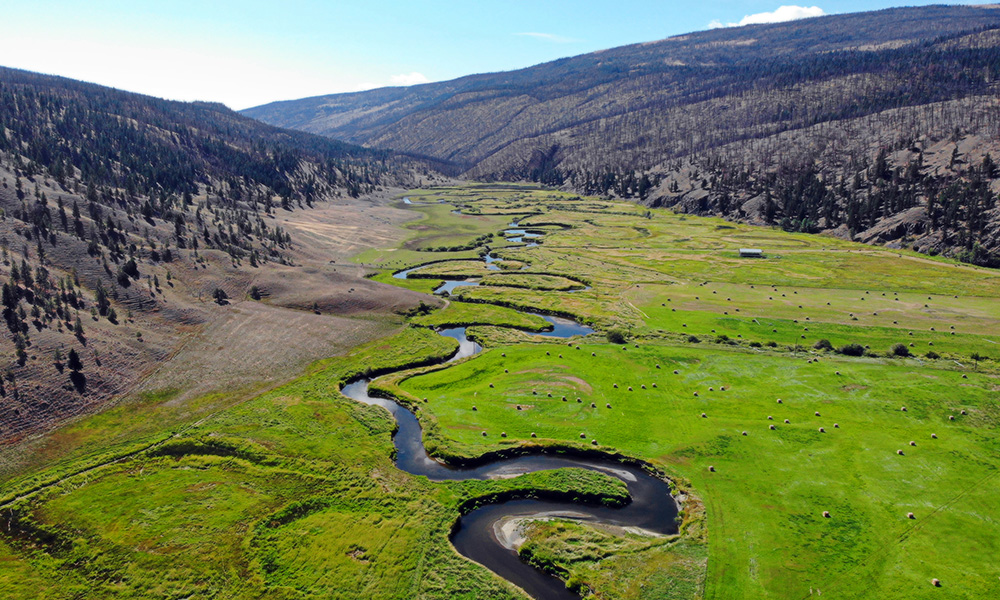
After wildfire, the devastation to the landscape and communities is obvious and unforgettable. Now, a UBC Okanagan researcher is taking a different look at fire-impacted areas. Dr. Alessandro Ielpi, an Assistant Professor in Geomorphology with UBCO’s Irving K. Barber Faculty of Science, recently published research examining how the record-setting 2017 Elephant Hill Fire affected the Bonaparte River near Cache Creek, BC.
The research was recently published in CATENA, and was developed in collaboration with his colleague and long-time friend Mathieu Lapôtre, an Assistant Professor in Earth and Planetary Sciences at Stanford University.
The wildfire started in July 2017 southwest of Ashcroft, rapidly growing northward. It eventually burned 192,000 hectares and destroyed more than 100 homes in two months. “It takes a few years to gain a full picture of how a wildfire has impacted a river. It’s sort of like a fog of war slowly lifting,” says Dr. Ielpi. “The Bonaparte River’s watershed was significantly impacted by the Elephant Hill Fire—about half of the entire watershed was burned to some degree.”
Dr. Ielpi says it’s important to keep in mind the Bonaparte—with a watershed shy of 4,000 square kilometres in surface area—is not a huge river system compared to, say, the Fraser, Mackenzie or Yukon rivers.
“When you think of a wildfire that impacts 1,900 square kilometres, it is indeed enormous. But watersheds are typically much larger,” he explains. “If you look at the watershed of very large rivers, they are hundreds of thousands, sometimes millions of square kilometres. To put that in perspective, even the largest wildfire we have burning in Canada is like a drop in the bucket when you look at the dynamics of really large river systems we have here on the continent.”
“Watersheds such as the Bonaparte River’s represent a sweet spot between sizes large enough to host mature floodplains with farmlands and communities, and small enough to be significantly impacted by large wildfires. And even though wetlands and riverbanks may not have directly burned, barren soils from hillslopes started releasing higher amounts of sediment to the river once the stabilizing vegetation was gone.”
“By comparing pre- and post-fire estimates of sedimentation in the Bonaparte River’s watershed, our model ultimately provides evidence of a megafire inducing watershed-wide alterations in stream mobility and geometry,” he adds. “This is an exploratory paper, but I hope it’s one that makes people think about the complex and multifaceted repercussions of wildfires, even years down the road.”
Please visit the UBC Okanagan news site to read the full story.
Through Strategy 10: Research Culture, UBC is working to develop the principles and practices that define a collaborative and inclusive research culture and that support mentorship, scholarship, discovery and creativity.